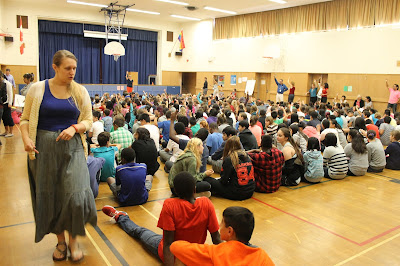There may be some parents or visitors who are new to this page. I have shared the blog address with the students I teach in Geography and I will post some information for that class first, so you won't have to wade through the other posts and news.
 |
| Developing a KWL chart with 7A around the subject of Geography |
 |
| Here are the contributions made by 7B. |
For all of my classes, I like to put up on the board what they will be doing, so the have a sense of what is coming. All Geography periods (and eventually History) will be a double period in length of approximately 80 minutes.
I introduced the class by trying to get a sense of what the students are familiar with when it comes to Geography. This is the first year that the curriculum moves from being Social Studies into the more specific disciplines of Geography and History.
To engage the students, Mr. Chung's class completed a 2005 Geography online survey. We did this as a large group. The link is here:
While I was looking for the preceding link, I came across another link for a quiz from Canadian Geographic. Here is the link for that one. I did not do this with 7A:
In 2009, The Canadian Atlas online (link on the side of the blog) began a humourous campaign to educate the citizenry about the importance of both History and Geography. Here is an image from that campaign. I used it during the lesson today:
Geography happens on Day 2 and Day 4 of the 5 day cycle. The first homework exercise is to complete a title page for the Geography duotang. Here is a rather rushed sample, by me.
 |
| This is due on Friday |
If you have any questions, please drop me a line at: marc.proudfoot@tdsb.on.ca
The island activities that were started last week came to an end on Monday with the group presentations. While there were large numbers of photos, I only have a couple to post:
 |
| Students who might not normally hang out got a chance to work together. |
 |
| The exercise gave the students a really great chance to get to know one another. |
Both schools -- AMG & The Grove -- had our first assembly together to go over rules and routines. This is something that needs to be repeated and repeated, especially at the start of the year, so positive habits and routines can be established.
In terms of developing habits, keeping track of the agenda is key. If students can develop the responsibility to complete this task on a regular basis, it will make taking care of assignments, or completing forms, much easier.
 |
| Sorry, I could not rotate this. Here is an example of an agenda that is completed ans has been signed by both a parent and Mr, P. |
I have also posted this reminded on the door, so students will see this before they come in the room:
This is the final item, I believe, for today.
The students carried on a tradition I have been doing for the past 14 years: creating a Coat of Arms. I began with explaining what the purpose of the exercise was, had a series of example up on the board for the students to see, and allowed the students to be creative in expressing themselves.
Homework
Geography title page
Outstanding forms: student names on board in Room 52




















































